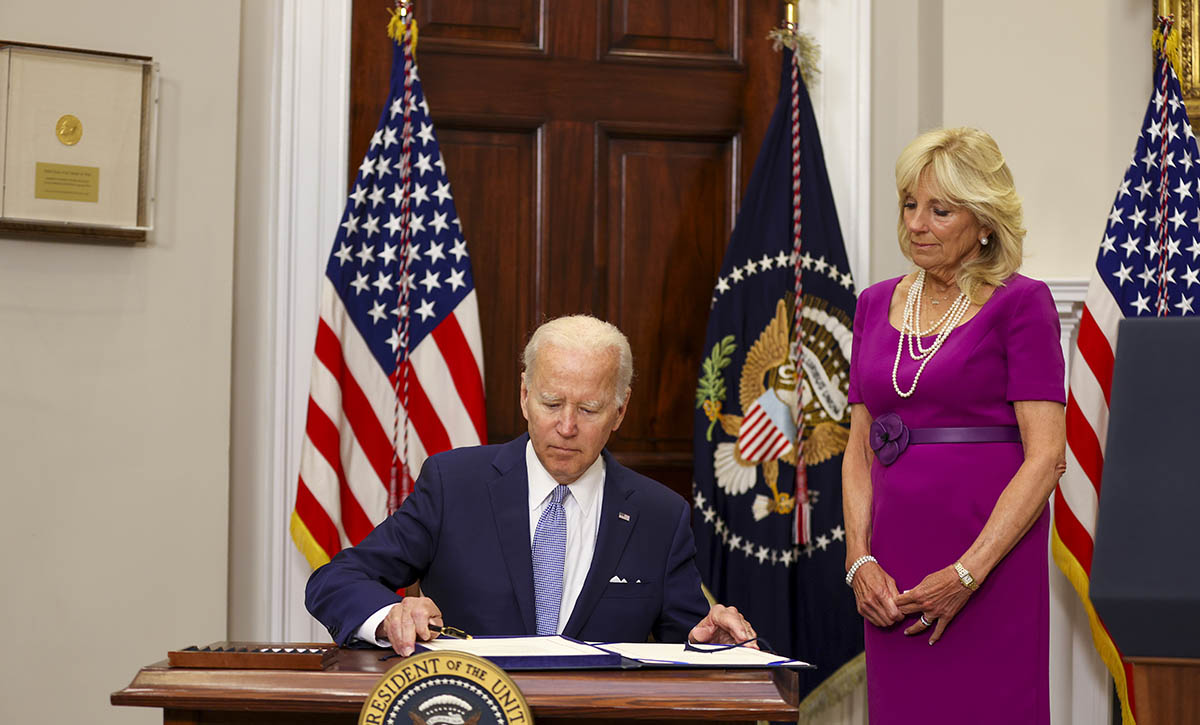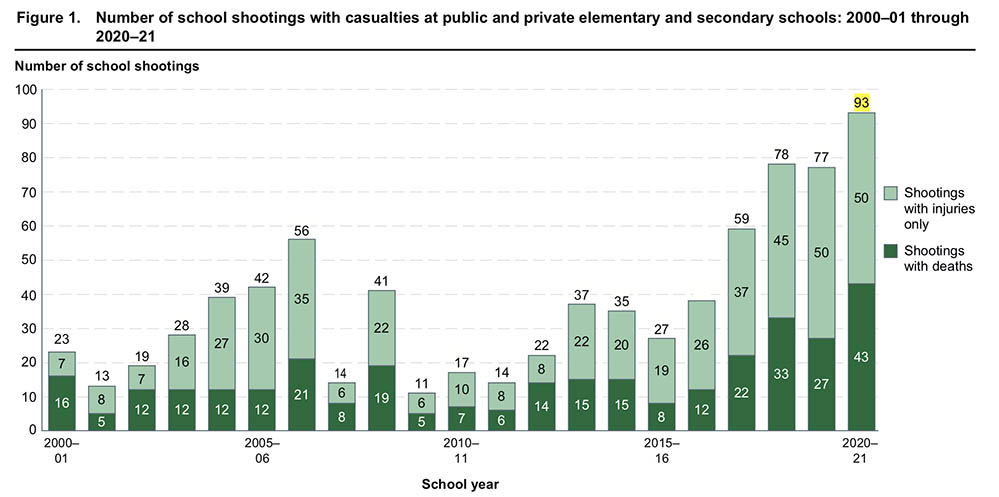Experts Question ‘School Safety Clearinghouse’ Mandated by New Gun Reform Law
The resource must include research-backed practices, but experts say it duplicates existing efforts that haven’t served educators well

Get stories like these delivered straight to your inbox. Sign up for The 74 Newsletter
The federal government must create a new “clearinghouse” of school safety practices backed by research as part of the gun reform legislation President Joe Biden signed Saturday. But some experts say the existing online collection of studies, practices and grant opportunities hasn’t served educators well.
“The distance between the federal government and your local school principal is huge,” said Ken Trump, a school safety expert who consults with districts across the country. “The federal government is the last place they look for resources.”
Launched in 2020, Schoolsafety.gov was an outgrowth of the Federal Commission on School Safety created after the 2018 mass shooting that left 17 dead at a high school in Parkland, Florida. Max Schachter, the father of one of the students killed at Marjory Stoneman Douglas High School, pushed for the updated clearinghouse in the new law.
The legislation gives the Department of Homeland Security responsibility for the Federal Clearinghouse on School Safety Evidence-based Practices. That could suggest the resources included would lean more toward what is often referred to as “hardening” schools with armed officers and tighter security, Trump said.
“Are we really saying that our education departments are inept and incapable of handling school safety?” he asked.
The clearinghouse is part of the Bipartisan Safer Communities Act, the gun reform law sparked by the May 24 mass shooting in Uvalde, Texas, that left 21 dead, including 19 fourth graders. While some observers said the new law makes only “modest progress” on gun control, others were pleased that it broadens the scope of what it means to keep schools safe by emphasizing mental health services.
“I take some consolation from the fact that we are not trying to ram through the increasing militarization of schools,” said Meg Caven, a senior research associate at the Education Development Center, a nonprofit research organization near Boston. But she added that there’s still limited evidence behind many school safety efforts. “[Schools] want an out-of-the-box solution and there isn’t one.”
The legislation comes as the latest school violence report, released Tuesday, shows 93 school shootings with casualties occurred during the 2020-21 school year — the highest number since the government began collecting the data in 2000. Many of the incidents occurred on or near school property while the buildings were closed for remote instruction.

Research backs a comprehensive approach to school safety — securing the physical space as well as emphasizing violence prevention and ensuring students feel welcome and supported at school. But researchers note that schools and communities face “enormous challenges” in striking that balance.
A 2018 Johns Hopkins University study found limited research on the effectiveness of controlling access to schools and adding more school safety hardware.
Adam Lane, principal of Haines City High School in central Florida, said he’s viewed the existing clearinghouse, but relies much more on local sheriff’s deputies who regularly walk through his school site and review safety procedures.
“I’ve got a face, a name and a cell phone number,” he said. “They know me. They know my students.”
His 3,000-student school also has 12 counselors, a social worker and a school psychologist. He said he would use any additional funding from the law to further reduce counselor caseloads, currently at 300.
The law provides roughly $2 billion for school safety improvements, school climate initiatives and student mental health services. Other provisions that focus on students and schools include:
- Expanding criminal background checks for gun buyers under 21 to include juvenile justice records, as well as mental health histories, which some say could result in unintended consequences. Riya Saha Shah, managing director of the Juvenile Law Center, said there currently is no central repository for juvenile mental health records and that states might try to make it easier to access such information because of the law. “We don’t know what it will be used for beyond this particular background check,” she said, adding that it could make students reluctant to seek help from school counselors and mental health specialists.
- Allowing districts to bill Medicaid for mental health services to students with an individualized education program, including telehealth, and providing $50 million to update Medicaid systems for school-based services. AASA, the School Superintendents Association, has been advocating for this flexibility. Within a year, the education department must also work with other federal agencies to create a technical assistance center to help districts, especially small and rural ones, with billing questions and administrative issues.
- Providing $1 billion for the education department’s Student Support and Academic Enrichment program — the part of the Every Student Succeeds Act that calls for students to have a “well-rounded” education. The funding can be used to improve student engagement and school climate with offerings such as art and music programs, foreign language and environmental education. The funding also supports educational technology
- Providing $500 million for training school counselors, social workers and psychologists through an existing Department of Education grant program.
- Including $240 million for Project AWARE, which stands for Advancing Wellness and Resiliency in Education. A partnership between state education and mental health agencies, the program provides training to school staff members and other professionals working with students. Sixty grantees have received funding since 2018, and according to the website, over 141,000 students have been referred for mental health services.
- Increasing funding for the 21st Century Community Learning Centers program by $50 million. These funds will be used to expand afterschool and summer programs for older students.
- Including $40 million for the National Child Traumatic Stress Network — a system of 116 centers that provide care and train educators and other professionals to understand the impact of trauma on children.
Get stories like these delivered straight to your inbox. Sign up for The 74 Newsletter


